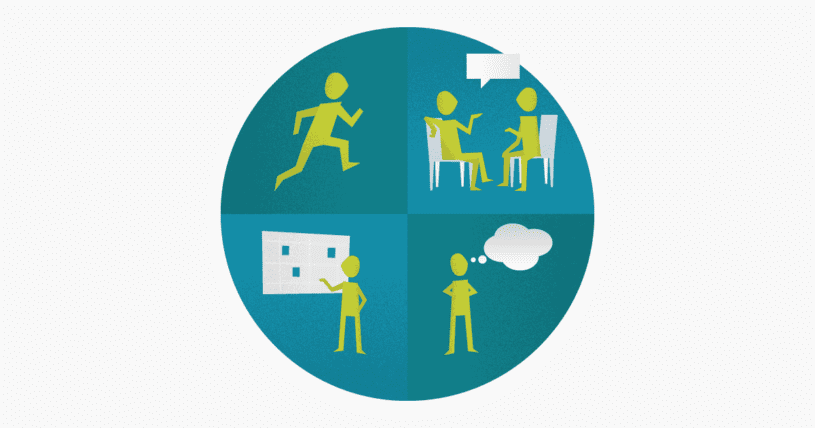Meetings. No one seems to like them, but we all have to go to them. When done properly, the right meetings can make your team run like a well-oiled machine. Agile ceremonies (aka meetings) are integral to the success and continuous improvement of many agile development teams.

In this blog, we’re going to take a look at four activities or “ceremonies” that happen on a regular basis in agile development. They are…
- Sprint Planning
- Daily Stand-up
- Sprint Review
- Sprint Retrospective
The importance of agile ceremonies
Ceremonies are affectively another name for “meetings” that occur throughout the agile development lifecycle. They are a repeating sequence of meetings that help build synthesis amongst the team, disseminate common goals and information, and update each other on progress. Let’s take a close look at each of the four agile ceremonies used today.
Sprint Planning
Sprint planning is meant to ensure the team is prepared to accomplish the right things in the upcoming sprint. This ceremony is often made up of two parts.
The first part is when the team pulls items from the backlog into their sprint backlog – these are the things they agree to work on. Then they decide how they will accomplish those things by breaking down the overall goals into specific tasks
The entire scrum team (the product owner, development team, and scrum master) should attend sprint planning.
Daily Stand-up
Daily standup is the team’s chance to sync up on what was accomplished yesterday, what they’re going to try to accomplish today, and discuss any blockers they’ve encountered that are slowing them down. The goal of the stand-up is to create visibility around the work being done and to ensure things are moving forward at the right velocity.
The scrum master and the development team should be in attendance at daily stand-up. Occasionally, outside stakeholders from marketing, support, or other teams are present at stand-up as listeners.
Sprint Review
The work that was completed is demonstrated at the end of the sprint during the sprint review. It should happen as soon as the sprint ends so that the product owner and other stakeholders can see things sooner rather than later. This allows the entire team to provide feedback. Many teams call sprint reviews “demos” and treat them as casual show-n-tell style meetings.
Cross functional teams should be present at the sprint review ceremony.
Sprint Retrospective
The sprint retrospective is the final agile ceremony that takes place in the sprint. The purpose of the retrospective is to reflect back on the previous sprint and discuss what went well, what went wrong, and learn how to improve the next sprint. The underlying goal of sprint retrospectives is to encourage and influence continuous improvement.
Action items and feedback should be captured and shared with the entire team during the retrospective.
The scrum master, development team, and anyone else involved in producing work for that sprint should attend the retrospective.
Conclusion
Each ceremony or meeting has a unique purpose and should happen at a specific time. Conducting each of these ceremonies will uncover ways for your team to work smarter, faster, and produce higher quality work. The key for each agile ceremony is preparing. Get them on the calendar, send out reminders, and be prepared with any key information you need ahead of time.

